Ginger Lozano, Sandra Gamboa, Roberto Maldonado, Elvis Llerena, Javier Guerrero
Galapagos National Park Directorate
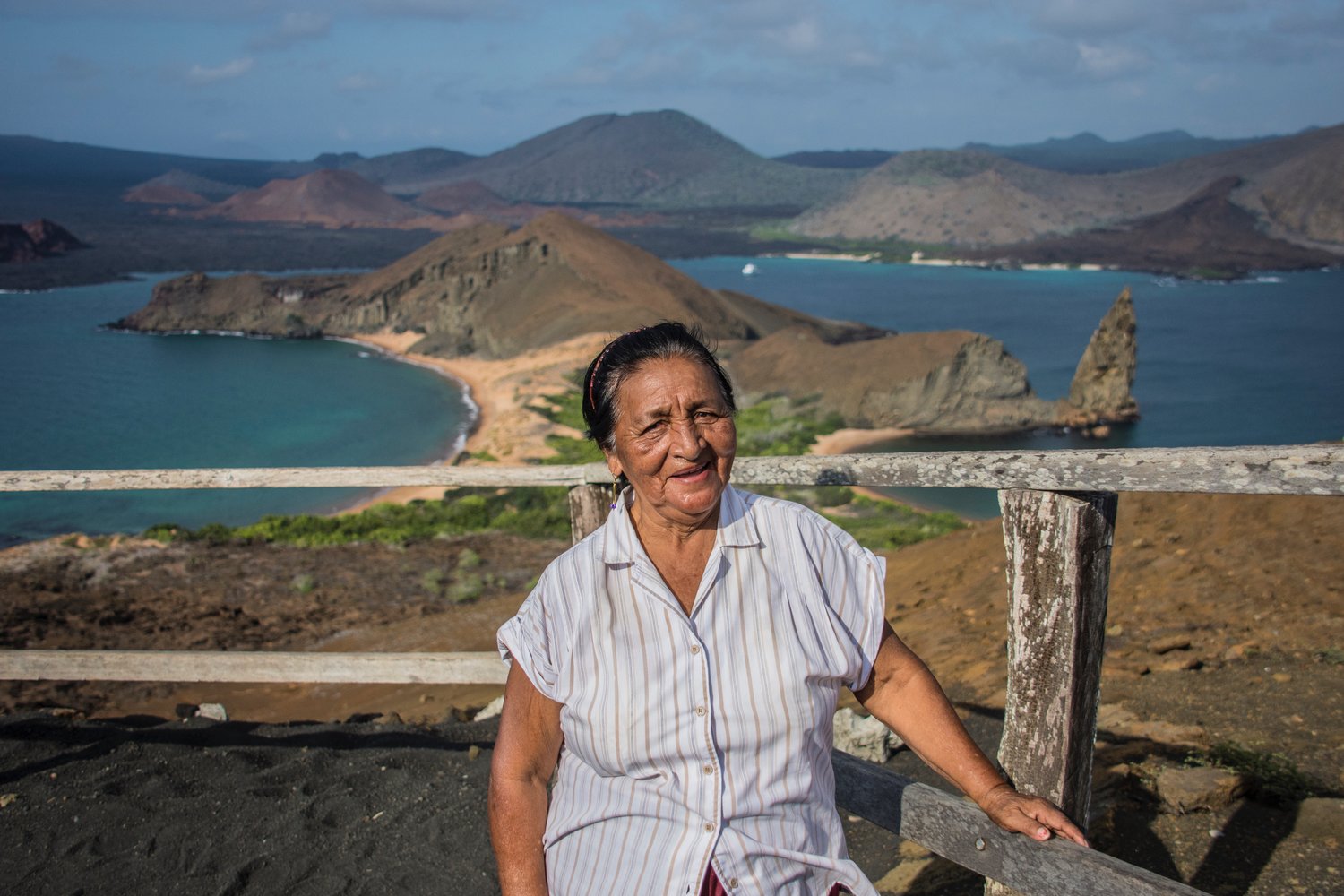
Figure 1. Carmen Criollo, Galapagos artisan. Photo: Dennis Ballesteros, naturalist guide
Galapagos residents are rediscovering the natural beauty of their islands. “As someone born in Galapagos, I feel so proud to finally get to know this wonderful place!” This was the reaction of Carmen Criollo, an artisan from Santa Cruz, when she visited Bartolomé Island during a trip sponsored by the Explore Galapagos program.
Galapagos is recognized as one of the best nature tourism destinations in the world. However, the high cost of tours makes it very difficult for Galapagos residents, or Galapagueños, to visit uninhabited parts of the archipelago. Christopher Arica, a high school student at Colegio Miguel Ángel Cazares, summed up the implications of this situation: “Many of us simply don’t realize that we are surrounded by a unique and magnificent natural place.”
As administrator of the Archipelago’s protected areas, the Galapagos National Park Directorate understands the importance of involving the local community in the conservation of Galapagos ecosystems. Providing opportunities for those living in Galapagos to experience natural wonders firsthand is an excellent way to build a connection between the local community and nature.
Through Explore Galapagos, the National Park allows community members to visit Galapagos natural areas as tourists, and to learn about the Park’s ongoing efforts to conserve this unparalleled World Heritage site.
THE COMMUNITY VISITS ITS HOME
In 2013, the National Park Directorate initiated Explore Galapagos to help park rangers get to know the protected areas they care for. Upon observing the sense of ownership that those rangers developed, the following year we expanded the program to include local community groups, with the goal of achieving similar results.
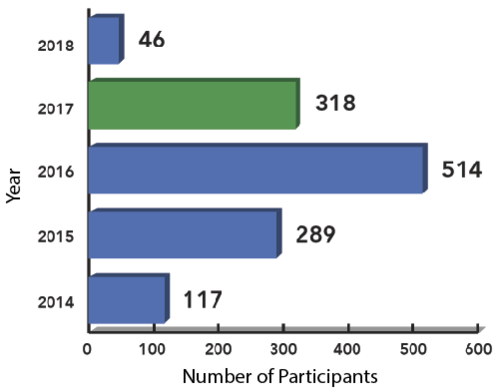
Since 2014, Explore Galapagos has earned the support of 16 Galapagos tour operators who voluntarily donate spaces on their tours. These businesses are motivated by three factors: contributing to the environmental education of the local population, becoming strategic partners of the National Park Directorate, and being viewed as socially responsible tourism operators.
To date, 1,284 people from Santa Cruz, San Cristóbal and Isabela Islands have participated in the program. Thanks to outside financial support, 2016 was the year with the largest number of participants (Figure 2). The number of participants was smallest in 2018, when outside funding was limited and we had to rely exclusively on spaces donated by tour operators.
PROGRAM PARTICIPANTS
Participants are selected carefully. Since one of the biggest goals of the program is to build environmental awareness, we often give first priority to students and teachers.
We also consider the personal financial resources of potential participants, since for many Galapagueños this program is the only way they could ever see the Islands. We invite homemakers, rural residents, artisans, and older adults who have lived in the Islands for many years without ever visiting the uninhabited parts of the Archipelago.
We also involve individuals whose daily activities could influence the environmental awareness of other community members. These include restaurant staff, taxi and truck drivers, employees at the Fabricio Valverde Recycling Center in Santa Cruz, public sector officials and Galapagos National Park staff.
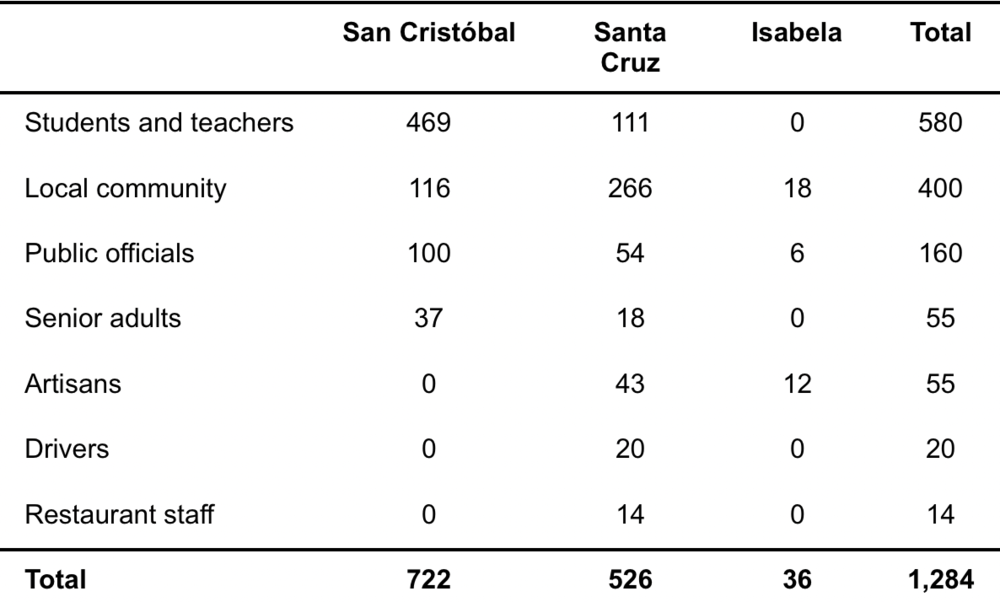
Table 1. Participants by sector and island of origin.
Most program participants have been from San Cristobal (56%), followed by Santa Cruz (41%) and Isabela (3%). The difference is due to the larger number of spaces donated by San Cristóbal tour operators and the National Park’s limited ability to cover the costs associated with transporting participants from different islands.
TOUR CHARACTERISTICS
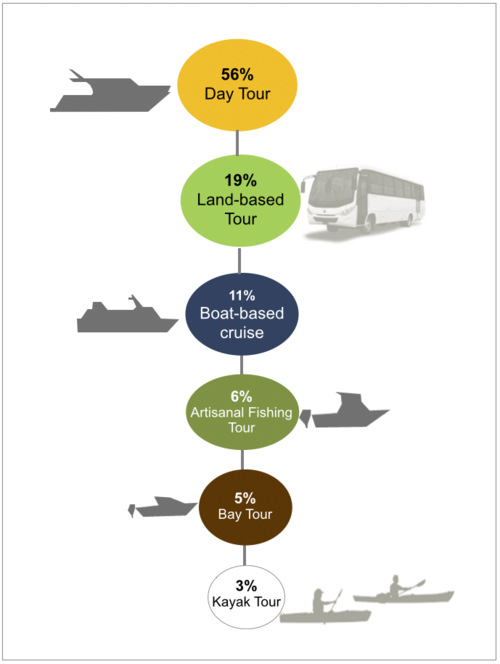
Explore Galapagos offers an average of one or two tours per month, with six kinds of tours available: land-based tours, day trips, boat-based cruises, artisanal fishing tours, kayak trips and bay tours. Availability depends on the number of participating operators, the National Park’s annual budget and the availability of external funding. Most community members have participated in day trips, followed by land-based tours and cruises (Figure 3).
Boat-based cruises are prohibitively expensive for the majority of Galapagos residents. This economic barrier has resulted in a gradual “distancing” of local inhabitants from natural areas, especially those areas furthest from populated centers. Explore Galapagos is focused on increasing opportunities for community groups to reach these sites through boat-based cruises, and we would like to expand the number of these cruises in the future. The tour operators who support boat-based cruises go to great lengths to ensure the community participants have a positive experience and make their entire staff available, including naturalist guides.
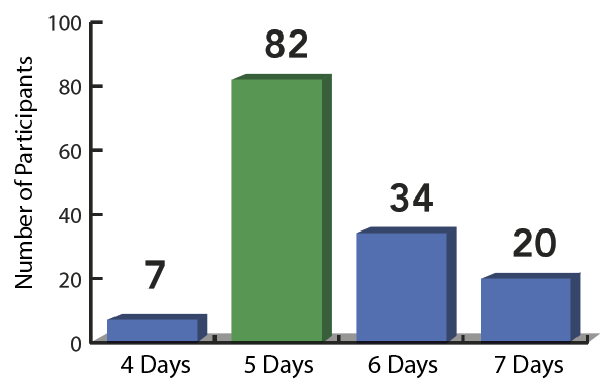
Most cruises are five days long (Figure 4) and usually include visits to North Seymour, Santa Fe, Bartolomé and the South Plaza Islands. The most frequent day tour destinations are Cerro Brujo, León Dormido and Manglecito — all beautiful locations that guarantee a positive visitor experience.
Naturalist guides accompany all tours, enriching the educational experiences of the participants. A total of 82 guides have engaged with Explore Galapagos thus far. Park rangers are also involved and provide complementary insights about the National Park’s conservation efforts.
PROSPECTS FOR THE FUTURE
For a program like Explore Galapagos, it is essential that we ask ourselves whether the participant experience alone is enough to generate greater commitment to conservation. At present, we can judge only by the comments of participants like Janeth Castillo, who said, “Explore Galapagos allowed me to learn and value what we have in Galapagos and to enjoy it as well.”
In the future we plan to develop a simple questionnaire that participants will complete before and after each trip, to measure changes in environmental knowledge, awareness and commitment.
To understand the impact of the program on environmental behavior, we will survey participants several months after their trips to identify any conservation actions they have undertaken. These measures will help us determine if our program objectives are being met.
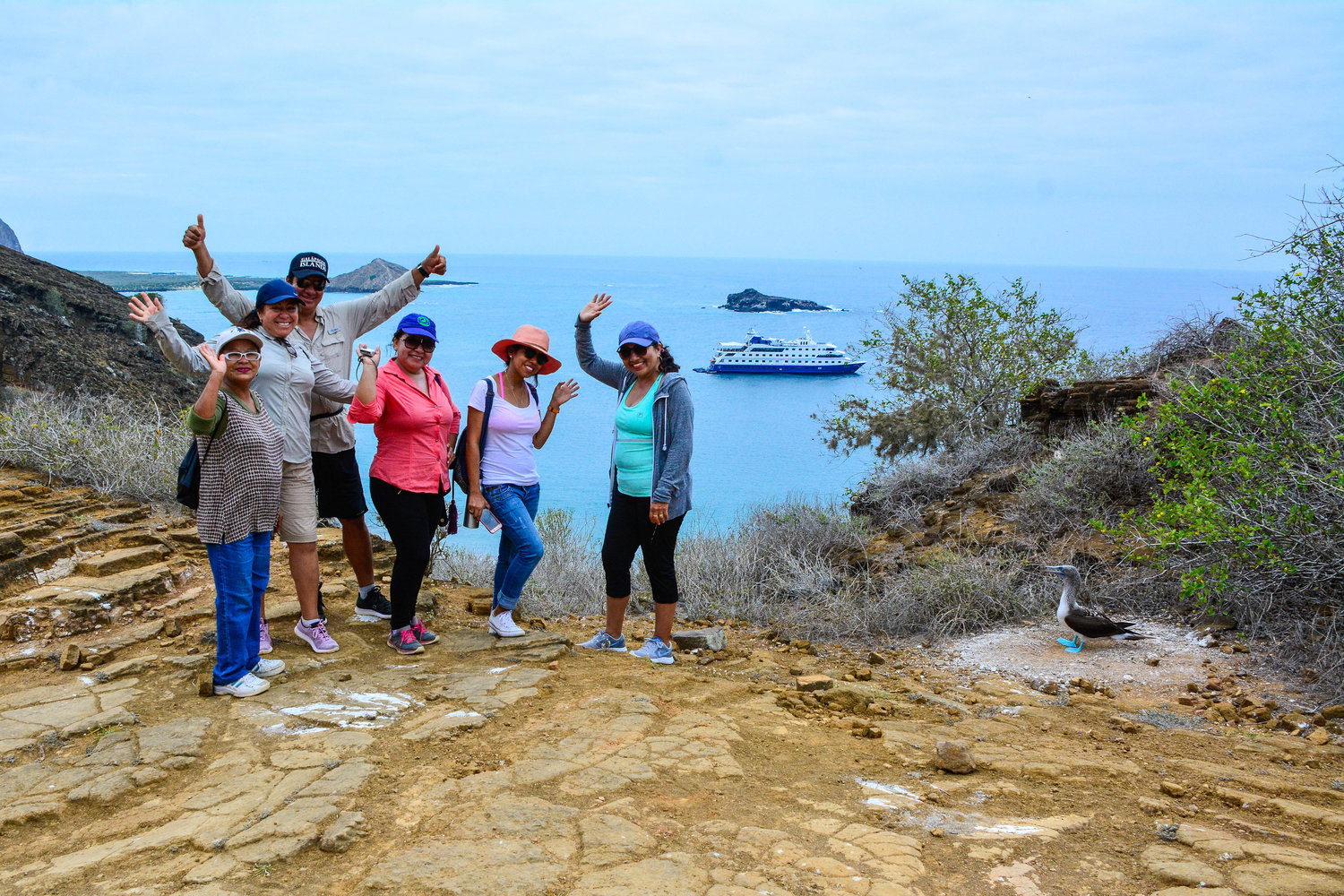
Figure 5. Group of Santa Cruz artisans accompanied by a park ranger Deisy Plaza at Punta Pitt. Photo: Metropolitan Touring Archive
It will be challenging to sustain Explore Galapagos in the coming years without additional resources. We hope to work closely with the private sector to strengthen its involvement, facilitating tourism operators’ understanding of the good that is achieved by helping local communities come to love and respect their natural surroundings. We would also like to identify better ways to recognize private sector collaborators, such as public events where we thank tourism operators for their involvement.
When we initially opened participation in the Explore Galapagos Program to the broader community, it was hard to believe that so many Galapagueños did not know the Islands. This program has strengthened the sense of connection between residents and nature by providing opportunities to experience firsthand the wonders of Galapagos. In the coming years we hope to invite additional community members to participate and to involve new tour operators in our work.
ACKNOWLEDGEMENTS
The Galapagos National Park Directorate would like to express its thanks to the tourism operators that have participated in Explore Galapagos over the past five years: Adriana, Anahí, Angreju, Archipel II, Big Fish, Carlos Guamán, Cindysol, Corazón Alegre, Dorita, Española II, Galápagos Kayaking, Galápagos Legend, Galápagos Party, Isabela II, Kpitana, La Pinta, Mantaraya, Narel, Queen Karen I, Roal, Samba, Santa Cruz II, Scuba Edén, Sea Hand, Sofía Girl, Speed Pacific, Stella Maris, Sunray, Tip Top II, Valeria, Varkyyo y Yolita II. The National Park Directorate is also grateful for the valuable collaboration of WWF-Galápagos, which believed in the potential of the program and has been instrumental in its implementation.
